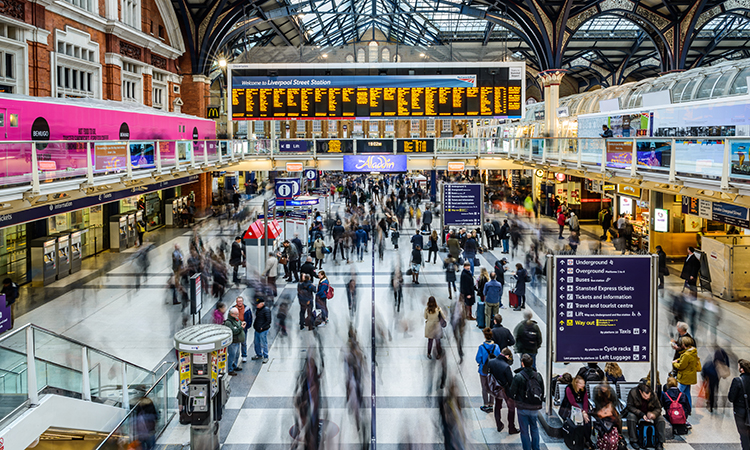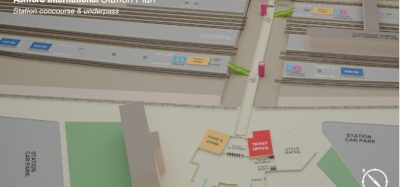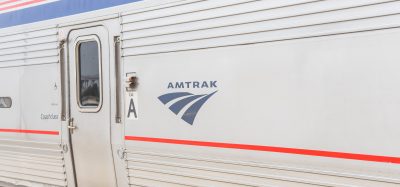Q&A with Martin Prior of GBRTT: Travel Snapshot analysis
Posted: 5 May 2023 | Elliot Robinson (Editorial Assistant - Global Railway Review) | No comments yet
Martin Prior, Head of Revenue Analysis and Reporting at Great British Railways Transition Team (GBRTT), speaks to Global Railway Review about the GBRTT Train Travel Snapshot analysis, detailing some of its key takeaways and findings.


Can you give us a general overview of the passenger analysis?
Our Train Travel Snapshot takes the figures that the Office of Rail and Road (ORR) publishes which look at overall rail journeys and revenue, and then digs into the reasons people are travelling.
We’re helping and encouraging the industry and government to make smart choices to make rail more financially sustainable: growth not just cost-cutting.
There are three ‘journey purpose’ categories: leisure, business and commuting. To infer this split, we’ve developed a methodology using data from the Wavelength survey.
Understanding why people are travelling and any changes over time is helpful when it comes to looking at implications and opportunities for industry revenue, which we know is still down on pre-pandemic levels.
Great British Railways Transition Team (GBRTT) has had an analysis team from day one, because our leadership understand the importance of data and insight when it comes to making more commercial, customer-focused decisions at a time when people have more choice than ever over whether and how to travel.
We’re helping and encouraging the industry and government to make smart choices to make rail more financially sustainable: growth not just cost-cutting.
How did this passenger analysis come together? Can you also speak about the involvement of the other organisations?
When you think about the constituent parts of the railway, this was a big cross-industry effort.
We’ve been working hard over the past year to get a more consistent national view of passenger revenue, working closely with the Department for Transport and Rail Delivery Group (RDG).
RDG run the Wavelength survey that our methodology is based on, and we work closely with them day-to-day to deliver consistent, high-quality insight and so naturally they had an interest.
The ORR publish official statistics, so it was important that they felt comfortable with our methodology, since it interprets their findings.
Were there any difficulties or challenges in compiling this analysis?
What has become clear is that many of rail’s markets have changed dramatically since the onset of COVID-19 and are unlikely to return to their previous patterns.
There are always challenges, but above all we had some complex questions to answer.
For example, in publishing these quarterly figures, what’s the most helpful point of comparison? That is important because much of the recent narrative has still been around recovery from the pandemic and that is a metric that we track very closely. But, actually, the pandemic is now quite a long time ago and what has become clear is that many of rail’s markets (leisure, business, commuter) have changed dramatically since the onset of COVID-19 and are unlikely to return to their previous patterns. These core markets have become more discretionary with many people now able to work from home for at least some of the working week with the mass adoption of video conferencing giving rail passengers more options. On the flip slide, leisure travel has bounced back more strongly resulting in many weekend trains being some of the busiest across the week. Therefore, rail needs to adapt and our reporting needs to reflect that – which is why we chose a quarter-on-quarter comparison.
There was another question around how to present these figures in light of the opening of the Elizabeth Line which gives recovery a bit of an artificial uplift, since they are included in national rail totals – we added a note, but making sure we’re presenting figures in their proper context is something we often have to grapple with.
What are some of the key insights that were discovered in the analysis?
Our first Train Travel Snapshot underlines the importance of leisure travel to railway revenue. We’d expect a post-summer dip – it was 15% down on the previous quarter – but trips for leisure still made up for over half (54%) of industry revenue in the quarter.
Our first Train Travel Snapshot underlines the importance of leisure travel to railway revenue.
The period in question – the final quarter of last year – was around the time that journey patterns really began to settle down after the upheaval of the pandemic, as customers found a rhythm that made most sense for them so we’re not seeing seismic shifts.
Disruption from national industrial action was a particular issue in this quarter. It is relatively straightforward to understand the on-the-day impact of a strike, but it is less easy to qualify the underlying impact on customer sentiment towards rail and the extent to which it is suppressing rail travel overall. We are acutely aware of the need for rail to rebuild trust with passengers over the coming year.
The second stage of opening the new Elizabeth Line in November helped lift National Rail revenue from commuting by 3%. Business travel revenue was up 6% on the previous quarter, but still accounts for a small share of the overall market.
What can operators take away from these findings? And what does it mean for them going forward?
We think there’s plenty of opportunity to entice commuters and business travellers back, as well as to grow the leisure market further.
That opportunity will vary by route and TOCs know their local market best, but what we can do at GBRTT is to bring people together to add value at a national level – whether that’s fares reform, national marketing or sales initiatives, or providing better data and insights to those making decisions at a national level.
We’re working with the Department of Transport and across the industry to better meet customers’ needs as they stand today, for example testing single-leg pricing. With RDG, TOCs and Network Rail, we also recently launched Nothing Beats Being There, a national marketing campaign. We believe it is important that this work continues, to help put industry finances on the best possible footing and secure rail’s long-term future, which is why we’re continuing work to secure investment in national marketing and build activity around ever-more robust insights.


Related organisations
Department for Transport (DfT), Elizabeth Line, Great British Railways Transition Team (GBRTT), National Rail, Office of Rail and Road (ORR), Rail Delivery Group (RDG)







